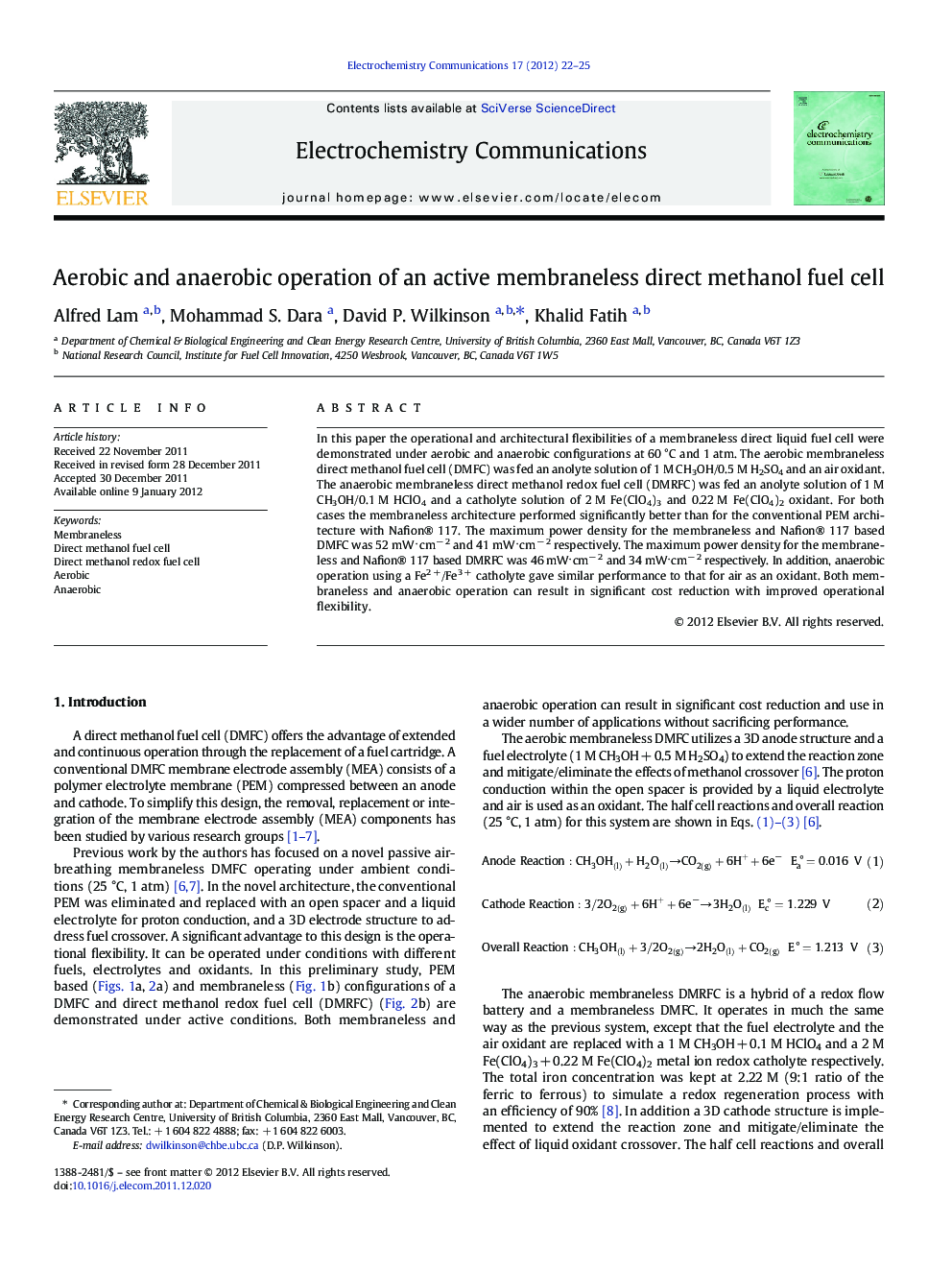| Article ID | Journal | Published Year | Pages | File Type |
|---|---|---|---|---|
| 179750 | Electrochemistry Communications | 2012 | 4 Pages |
In this paper the operational and architectural flexibilities of a membraneless direct liquid fuel cell were demonstrated under aerobic and anaerobic configurations at 60 °C and 1 atm. The aerobic membraneless direct methanol fuel cell (DMFC) was fed an anolyte solution of 1 M CH3OH/0.5 M H2SO4 and an air oxidant. The anaerobic membraneless direct methanol redox fuel cell (DMRFC) was fed an anolyte solution of 1 M CH3OH/0.1 M HClO4 and a catholyte solution of 2 M Fe(ClO4)3 and 0.22 M Fe(ClO4)2 oxidant. For both cases the membraneless architecture performed significantly better than for the conventional PEM architecture with Nafion® 117. The maximum power density for the membraneless and Nafion® 117 based DMFC was 52 mW⋅cm− 2 and 41 mW⋅cm− 2 respectively. The maximum power density for the membraneless and Nafion® 117 based DMRFC was 46 mW⋅cm− 2 and 34 mW⋅cm− 2 respectively. In addition, anaerobic operation using a Fe2 +/Fe3 + catholyte gave similar performance to that for air as an oxidant. Both membraneless and anaerobic operation can result in significant cost reduction with improved operational flexibility.
► Aerobic and anaerobic operation of an active membraneless fuel cell was demonstrated. ► Power density of membraneless DMFC was 52 mW⋅cm− 2 vs. PEM based case at 41 mW⋅cm− 2. ► Power density of membraneless DMRFC was 46 mW⋅cm− 2 vs PEM based case at 34 mW⋅cm− 2. ► DMRFC oxidant (Fe2 +/Fe3 +) had similar performance to air without cathode Pt catalyst. ► Aerobic and anaerobic system was shown to operate for 4 h.
